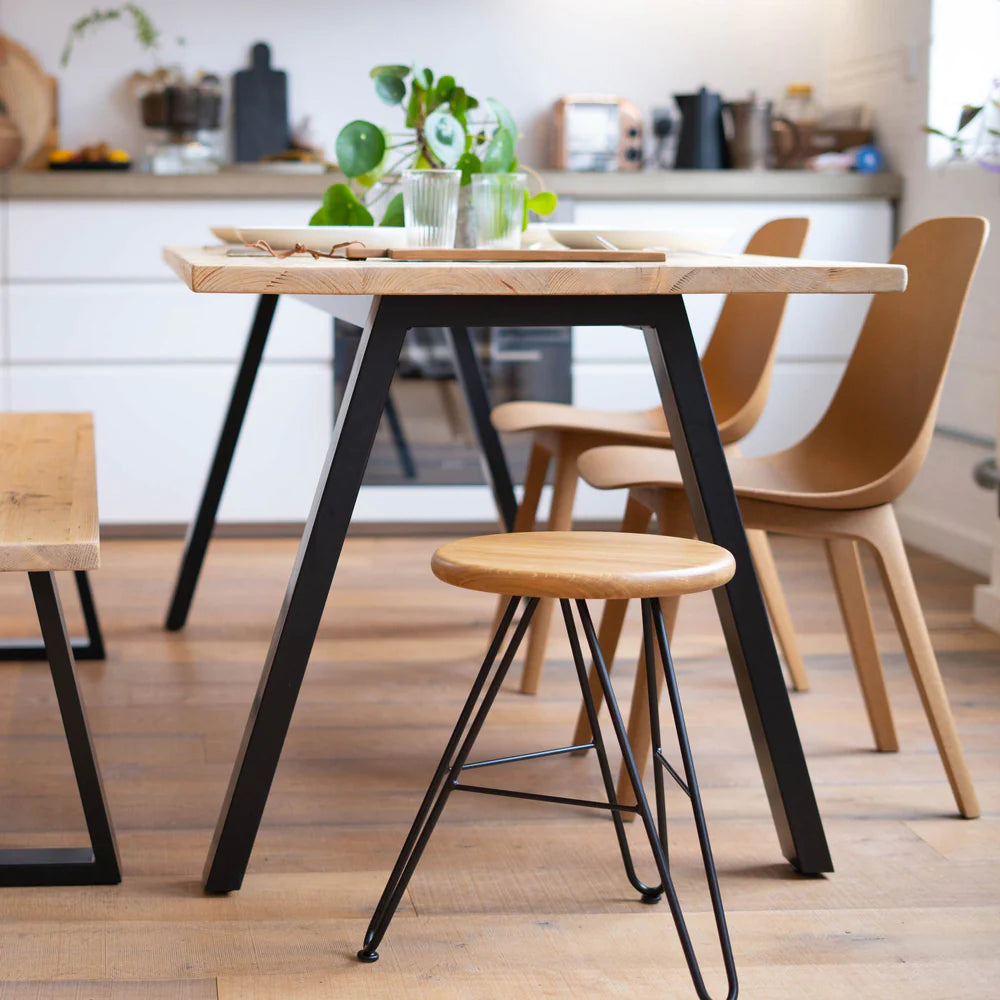Update Your Furniture with Elegant Dining Room Table Legs
Update Your Furniture with Elegant Dining Room Table Legs
Blog Article
A Thorough Take A Look At Dining Table Leg Styles: Discovering the Suitable Suit
Picking the best dining table leg design is important for both aesthetic appeal and useful capability. For those with bigger tables, trestle legs make certain durable assistance, whereas barrette legs introduce a mid-century contemporary vibe with their minimal design. The x-shaped legs mix contemporary design with improved security.
Typical 4 Legs
Among the various kinds of table leg styles, the standard four-leg style continues to be a classic option for lots of households. This traditional arrangement supplies a harmonious mix of performance and appearances, making it a seasonal favorite. 4 legs supply well balanced support, making certain the table continues to be steady and efficient in bearing considerable weight. This is specifically useful for households that frequently host big celebrations or use their dining table for numerous functions, such as job or crafting.
From an aesthetic point of view, the typical four-leg style can be easily adapted to different interior styles. Whether crafted from wood, metal, or a combination of products, these legs can be delicately sculpted, streamlined and minimalistic, or anything in between. Their versatility allows them to complement both rustic and modern settings effortlessly.
Additionally, the simple framework of the four-leg style assists in ease of activity and positioning within a space. Unlike even more complicated bases, this style reduces obstructions, supplying enough legroom for diners. In recap, the typical four-leg eating table leg style marries sustaining style with useful capability, making it a sharp option for those seeking both form and feature in their dining furniture.
Stand Base
Often commemorated for its classy and space-efficient design, the stand base is a notable option to the standard four-leg setup in dining table leg styles. Without edge legs, restaurants are afforded higher liberty of motion, making it a suitable option for round and oblong tables that promote more intimate and comprehensive events.
The main column itself supplies a canvas for intricate designs and artistic expressions, including an element of aesthetic passion beneath the table. In summary, the pedestal base combines performance with style, making it an improved and sensible alternative for varied eating settings.
Trestle Legs
Trestle legs give a durable and classic foundation for dining tables, identified by their horizontal cross-bracing and sturdy assistance beams. Stemming from medieval times, this layout has progressed yet retained its essential structure, making it a seasonal favorite in both standard and contemporary settings. The central trestle beam of light, commonly sustained by two or more vertical posts, provides outstanding security, enabling for larger table sizes without the demand for extra legs.
A considerable advantage of trestle leg tables is the sufficient legroom they offer. Unlike tables with four edge legs, the absence of obstructions at the table's edges provides unblocked area for chairs and diners, enhancing convenience and access. This makes trestle tables excellent for accommodating bigger celebrations, whether in an eating space or a banquet hall.
The visual flexibility of trestle legs is notable. Available in a selection of products such as wood, steel, and composite, they can be about his completed to complement a vast array of interior designs. From rustic farmhouse to smooth modern layouts, trestle legs can be personalized to match private preferences. Their long-lasting appeal and functional benefits make trestle legs an engaging option for those seeking both style and usefulness in their dining table.
Barrette Legs

The allure of barrette legs depends on their simplicity and adaptability - dining room table legs. Readily available find more in a series of materials, consisting of steel and brass, they can be completed in many explanation shades to enhance different interior designs. Whether coupled with a rustic wood table top or a modern glass surface area, barrette legs effortlessly blend functionality with a touch of vintage beauty
Sturdiness is one more noteworthy function of hairpin legs. Despite their delicate appearance, these legs are engineered to birth significant weight, making certain the table remains secure and safe and secure. Additionally, they are fairly simple to set up, making them a prominent selection for do it yourself enthusiasts and professional furnishings makers alike.
X-Shaped Legs

Built from products such as steel, wood, or a combination of both, X-shaped legs can be customized to match numerous design preferences. Steel legs often provide a smooth and commercial feeling, ideal for loft-style houses and contemporary eating rooms.
In addition, the design behind X-shaped legs makes certain also weight circulation, lessening the danger of wobbling and improving toughness. This makes them specifically well-suited for larger dining tables that need extra support. Essentially, X-shaped legs blend useful engineering with modern appearances, making them a classic option for diverse dining atmospheres.
Conclusion
An extensive understanding of dining table leg styles discloses the distinctive attributes and benefits of each design. Conventional four legs supply security and classic allure, while pedestal bases offer legroom and a streamlined look. Trestle legs ensure durable support for bigger tables, and barrette legs introduce a mid-century modern visual. X-shaped legs incorporate modern style with enhanced security. Choosing the suitable leg style ensures both useful and aesthetic contentment in any type of eating space.
Report this page